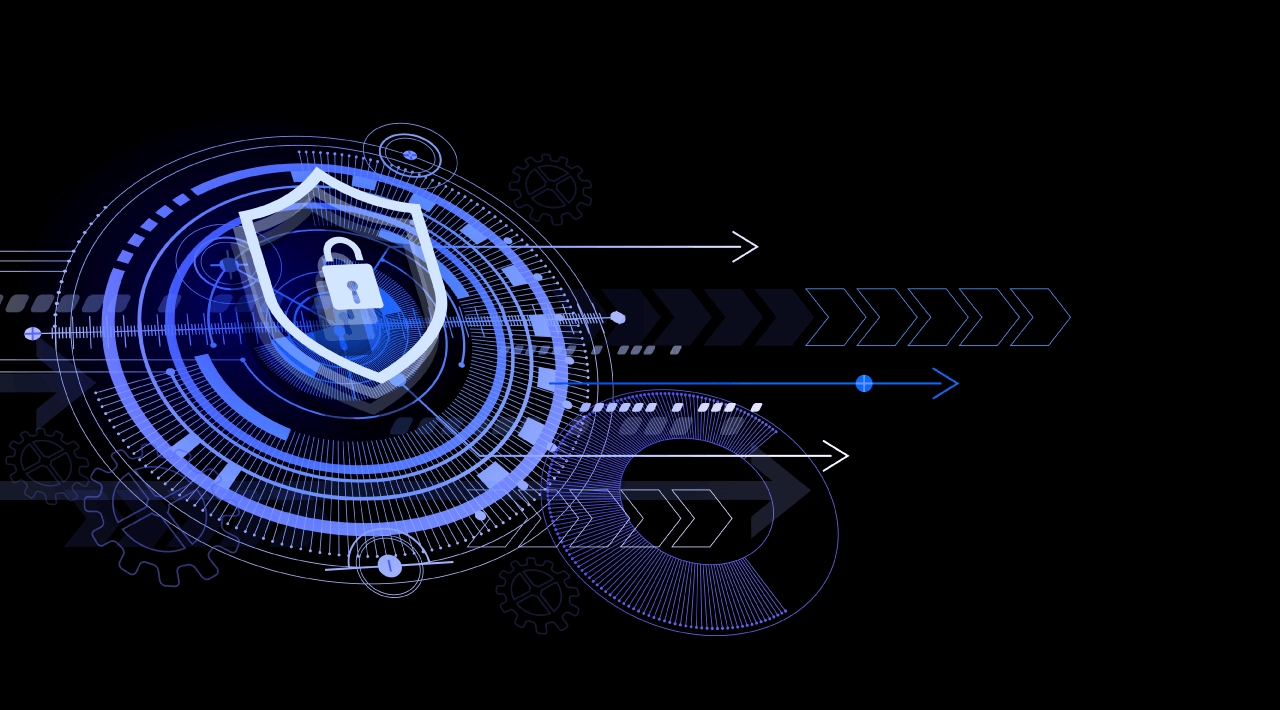How to Ensure Data Security and Cybersecurity in Data Centers
Ensure your company’s
data security and
cybersecurity with
Data Center infrastructures that integrate advanced protection technologies and continuous monitoring.
Ensuring Information Integrity in Your Data Centers
Companies face increasing risks from
cyberattacks and vulnerabilities that can compromise
information security and system
availability. Security breaches not only result in economic losses but can also damage your reputation and customer trust. Furthermore, the lack of
data encryption, robust firewalls, and intrusion detection systems can expose your company to constant threats.
Increasing Protection with Physical and Cyber Security
Cirion Technologies’ solutions for
Data Centers combine
physical security and advanced
cybersecurity to protect your company’s most critical assets. With next-generation
firewalls,
data encryption, and
24/7 surveillance, continuous information protection is ensured. Additionally,
intrusion detection systems and
access control guarantee that only authorized personnel can access your data, mitigating risks and ensuring its
integrity and
availability.
- Implement advanced firewalls
- Encrypt your data for maximum security
- Monitor with 24/7 surveillance
- Strengthen access control
- Prevent intrusions with active detection
- Protect with advanced security
- Maintain information integrity
Implement Advanced Firewalls
Protect your company’s infrastructure with
firewalls that block unauthorized access, reducing the risk of
cyberattacks and
protecting information security.
Encrypt Your Data for Maximum Security
Ensure information
confidentiality with
data encryption that protects your company from security breaches, with the assurance that only authorized individuals can access it.
Monitor with 24/7 Surveillance
Guarantee continuous protection of your
Data Centers with
24/7 surveillance systems that detect and respond to any threat in real-time.
Strengthen Access Control
Implement advanced
access control to limit entry to facilities and systems, ensuring that only authorized personnel have access to sensitive information.
Prevent Intrusions with Active Detection
Utilize
intrusion detection systems that monitor and analyze network traffic for suspicious behavior to prevent unauthorized access.
Protect with Advanced Security
Ensure the
physical security of your
Data Centers with
fire protection systems, surveillance cameras, and controlled access measures to prevent incidents.
Maintain Information Integrity
Ensure
data integrity through security policies that protect information from storage to transmission, thereby minimizing alteration risks.
Data Security and Cybersecurity in Data Centers: Important Aspects
- Physical Security: Physical security is crucial to protect your Data Center’s assets against unauthorized access and physical threats. IT managers must ensure that the Data Center has robust access controls, such as biometric locks, identification cards, and camera surveillance. Additionally, the infrastructure must be protected against physical events like fires, floods, and natural disasters through detection and prevention systems.
- Information Protection and Data Encryption: Data encryption in transit and at rest is essential to protect sensitive information. Data must be encrypted using advanced protocols to prevent unauthorized access and information leaks. Furthermore, strict policies on information handling and storage must be applied to guarantee its integrity and confidentiality.
- Access Control and Authentication: Implementing comprehensive access control systems and multifactor authentication (MFA) helps ensure that only authorized personnel have access to critical systems. This includes both physical access to the Data Center and logical access to systems and applications. Multifactor authentication adds an extra layer of security, reducing the risk of unauthorized access.
- Network Security and Firewalls: Network security is fundamental to protecting your Data Center against cyberattacks and external threats. The use of advanced firewalls, intrusion detection and prevention systems (IDS/IPS), and network segmentation can help prevent unauthorized access and attacks. Additionally, it is important to continuously monitor the network to detect and respond to security incidents in real-time.
- Regulatory Compliance and Security Policies: Complying with security regulations and standards is crucial to ensure data protection and cybersecurity. IT managers must ensure that Data Center operations comply with globally recognized regulations such as ISO 27001, PCI-DSS, and GDPR. Furthermore, it is important to establish and maintain clear security policies that address risk management, incident response, and staff training.
- Monitoring and Incident Response: A continuous monitoring system and effective incident response are vital for timely threat detection and mitigation. Data Centers must have monitoring tools to supervise activity in real-time and clear procedures for incident management. This ensures rapid identification and resolution of security problems.
- Cloud Security and Shared Data Protection: When using cloud services or sharing data among multiple clients, it is essential to ensure the protection of this data. Security measures must include controls to protect shared data and ensure that the cloud infrastructure meets the same security standards as on-premise systems.
Frequently Asked Questions about Data Security and Cybersecurity in Data Centers
What physical security measures are implemented to protect the Data Center against unauthorized access and disasters?
To protect the Data Center against unauthorized access and disasters, several physical security measures are implemented to ensure data integrity and availability. These include:
- Strictly regulated access control: Use of identification cards, biometric authentication, and constant surveillance with high-definition cameras to ensure that only authorized personnel can enter the facilities.
- Bunkers and physical barriers: Data centers are built with materials resistant to explosions, fires, and earthquakes. Additionally, they are typically located in areas of low seismic activity and outside flood risk zones.
- Perimeter security: Fences, walls, and intrusion detection systems surrounding the Data Center, along with the presence of security personnel on 24/7 shifts.
- Fire protection systems: Advanced smoke detectors, inert gas fire suppression, and automatic extinguishing systems designed to protect both people and equipment without damaging electronic components.
- Power and climate redundancy: Multiple power sources, including backup generators and UPS (Uninterruptible Power Supply), as well as redundant cooling systems to ensure that equipment operates optimally under any circumstances.
These measures ensure operational continuity and the protection of critical infrastructure.
How is data encryption ensured in transit and at rest, and what protocols are used?
To guarantee data encryption both in transit and at rest, various security strategies and protocols are implemented:
- Encryption in transit: Secure protocols such as TLS (Transport Layer Security) and SSL (Secure Sockets Layer) are used to encrypt communication between the client and the server. This ensures that transmitted data is protected against interception and unauthorized access during transfer.
- Encryption at rest: Stored data is encrypted using robust encryption standards, such as AES (Advanced Encryption Standard) with 256-bit keys. This level of encryption protects information in case of unauthorized access to physical storage.
- Key management: Strict policies are implemented for cryptographic key management, including the generation, storage, and periodic rotation of keys, ensuring that access to encrypted data is restricted only to authorized personnel.
- Auditing and monitoring: Regular audits and constant monitoring of systems are performed to quickly detect and respond to any unauthorized access attempt or security breach.
These measures, combined with the use of cutting-edge technologies, ensure the confidentiality and integrity of data throughout its lifecycle.
What access control and multifactor authentication systems are employed to restrict access to critical systems?
To restrict access to critical systems, advanced access control and multifactor authentication (MFA) systems are employed to ensure the security of IT environments:
- Multifactor authentication (MFA): Combines at least two authentication methods to verify user identity, such as something they know (password or PIN), something they possess (security token or mobile device), and something they are (biometrics, such as fingerprints or facial recognition). This significantly reduces the risk of unauthorized access.
- Biometric authentication: Advanced biometric technology, such as fingerprint scanning or facial recognition, is used to validate user identity. This additional layer of security ensures that only authorized individuals can access the systems.
- Role-based access control (RBAC): Systems are implemented that grant access permissions based on the user’s role within the organization, limiting access only to the systems and data necessary to perform their functions.
- Token-based authentication: Use of physical or virtual tokens that generate one-time passwords (OTP) and allow identity verification during login, providing an extra layer of security.
- Monitoring and auditing: Continuous tracking of access sessions is performed, which allows for the identification of suspicious activities and ensures that any unauthorized access attempt is quickly detected and blocked.
These technologies ensure that access to critical systems is strongly protected, minimizing the risks of security breaches.
What network security solutions, such as firewalls and intrusion detection systems, are implemented to protect against external threats?
To protect the infrastructure against external threats, various network security solutions are implemented to ensure the protection of critical systems:
- Next-generation firewalls (NGFW): These advanced devices not only filter network traffic based on IP addresses, ports, and protocols but also inspect content at the application level. They can detect and block threats based on known signatures and anomalous behaviors.
- Intrusion detection and prevention systems (IDS/IPS): These solutions analyze network traffic in real-time to identify suspicious behavior or attack patterns. IDS systems alert to potential intrusions, while IPS systems take automatic actions to block them before they can compromise security.
- Network segmentation: Network segmentation strategies are used to isolate the most critical areas from the rest of the environment, minimizing the attack surface and reducing the impact in case of an intrusion.
- DDoS attack protection: Implementation of specialized solutions that detect and mitigate distributed denial-of-service attacks, ensuring operational continuity by absorbing and filtering malicious traffic without affecting system operation.
- Continuous monitoring and traffic analysis: Networks are subject to constant monitoring to identify unusual activities and take preventive or corrective actions in real-time. This monitoring also includes the detection of potential vulnerabilities that could be exploited.
These solutions work in an integrated manner to protect the network against external threats and maintain the integrity of key data and systems.
How is compliance with security regulations ensured, and what policies are in place to manage risks and respond to incidents?
Compliance with security regulations and effective risk and incident management are ensured through a comprehensive approach that includes policies, controls, and processes aligned with the most rigorous industry standards:
- Compliance with international regulations: The infrastructure follows globally recognized standards and regulations, such as ISO 27001 for information security management and GDPR for personal data protection, ensuring that operations comply with applicable legal and regulatory requirements in each region.
- Risk management policies: Risk management programs are applied that identify, evaluate, and prioritize potential threats. These programs allow for risk mitigation through preventive controls, as well as the implementation of contingency and business continuity plans in case of incidents.
- Regular evaluations and audits: Periodic internal and external audits are conducted to verify compliance with regulations and detect potential weaknesses in security systems. This includes penetration testing, vulnerability assessments, and review of security policies.
- Incident response plans: Robust incident response policies are implemented that allow for rapid threat detection and a clear process for containment, eradication, and recovery from security incidents. These plans are designed to minimize the impact of any attack and restore operations as quickly as possible.
- Staff training and awareness: Employees receive continuous cybersecurity training, ensuring they understand internal policies and know how to properly handle risks, as well as respond to a security incident.
These policies and controls ensure a secure environment aligned with the strictest regulations, protecting both data and organizational operations.










